‘Mårtens Afton’ - Gåsamiddag.
Mårtensafton; St Martin’s Goose—St Martin, The patron saint of mostly south Swedish gastronomes...
-
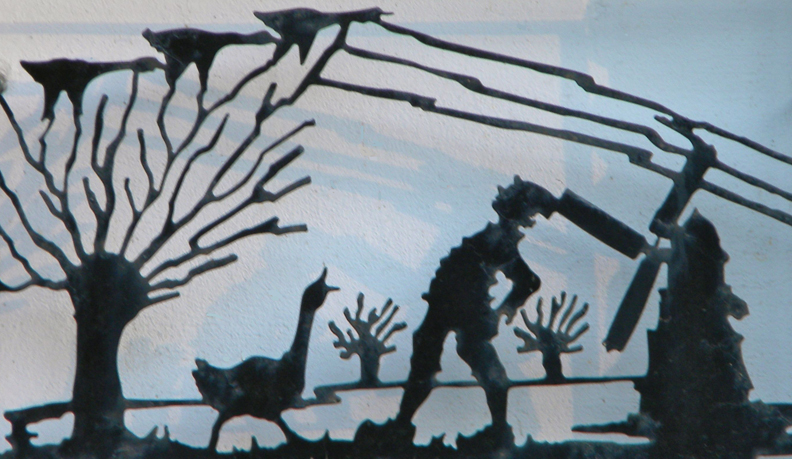 A classic illustration of a goose that didn't end on the dinner table—Akka, Nils Holgersson's goose from Selma Lagerlöf's book "The Wonderful Adventures of Nils" [Nils Holgerssons underbara resa]
A classic illustration of a goose that didn't end on the dinner table—Akka, Nils Holgersson's goose from Selma Lagerlöf's book "The Wonderful Adventures of Nils" [Nils Holgerssons underbara resa] -
-
On November 10, St Martin’s Eve, parties hailing from Skåne, the southernmost province of Sweden, come together, usually at a restaurant; they gather, not exactly because of the saint himself, but on account of this thousand-year-old attribute—the goose.
-
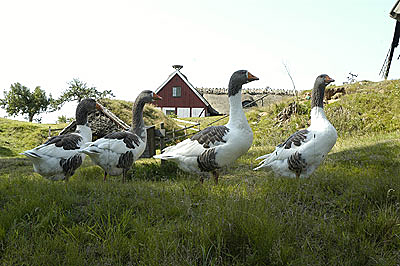 St Martin’s Eve is a tradition with roots in Skåne, the southernmost province of Sweden.
St Martin’s Eve is a tradition with roots in Skåne, the southernmost province of Sweden. -
-
The connection between the two has an economic background. Geese are at their fattest in early November, and so this is the right time for dispatching them. In St Martin’s native France, this was also the time for tasting the vintage. And the saint had to be honored with a good meal of course. And so the trio of goose, wine and Martin was forged in France, spread from there to Germany and, in the 16th century, found its way to Sweden. The history of geese in Sweden goes back to the Stone Age, but the earliest known connection with Martin occurs in the Stockholm region in 1567.
-
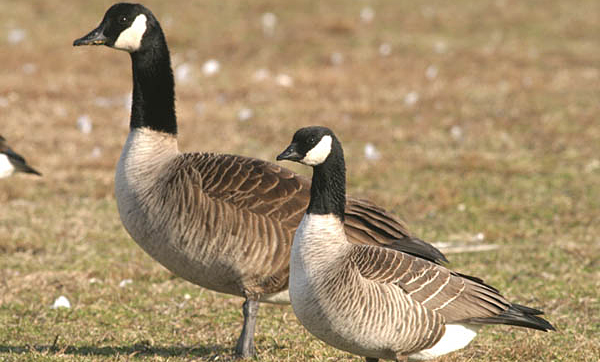 Geese are at their fattest in early November.
Geese are at their fattest in early November. -
The menu is topped by a heavily spiced, sweet and sour soup, “black soup” made from goose or pig’s blood, and of such disputed merit, even in Sweden that an alternative—consommé, for example—is usually available.
-
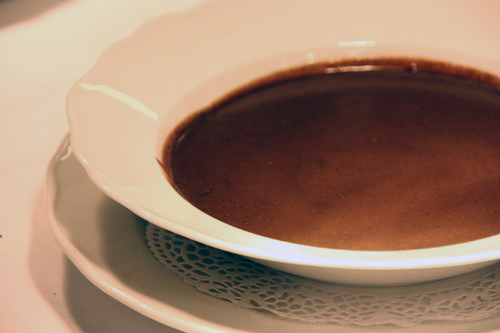 Svartsoppa, “black soup,” heavily spiced, sweet and sour soup made from goose or pig’s blood.
Svartsoppa, “black soup,” heavily spiced, sweet and sour soup made from goose or pig’s blood. -
The main course is the roast goose, and for dessert there will be apple pie (äpplekaka) or spettkaka, a remarkable three-foot high ziggurat made from innumerable egg yolks and sugar and baked, on a skewer, over an open fire. This “pyramid cake” used to be widespread, but today is only eaten in Skåne and the Pyrenees.
-
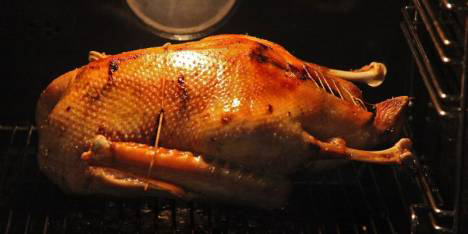 The roast goose, prepared almost like a traditional turkey dinner.
The roast goose, prepared almost like a traditional turkey dinner. -
To the people of Skåne, Skåningar the Scanians, this trinity of “black soup”, roast goose and spettkaka is a proud, poignant and evocative provincial symbol, so many of them would not care to know that the whole thing was invented in a Stockholm restaurant during the 1850s. All the constituents, though, recall the elaborate artistry of the renaissance cuisine.
-
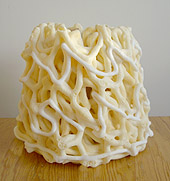 A small "spettkaka" - many of the cakes that are served at local Inns in Sweden's southern region can take up to 6-8 hours to make.
A small "spettkaka" - many of the cakes that are served at local Inns in Sweden's southern region can take up to 6-8 hours to make. -
Based on research and words by the late Professor Jan-Öjvind Swahn, Lund Sweden
-
-
-
